
All categories
Featured selections
Trade Assurance
Buyer Central
Help Center
Get the app
Become a supplier

(2671 products available)










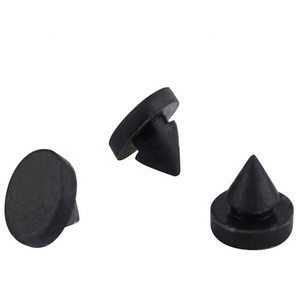


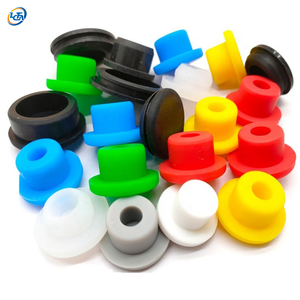


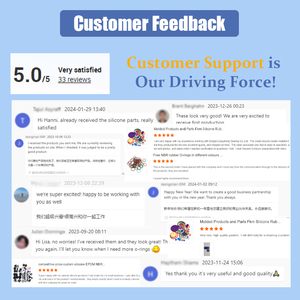



















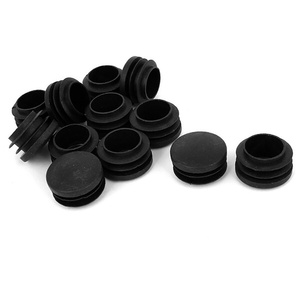

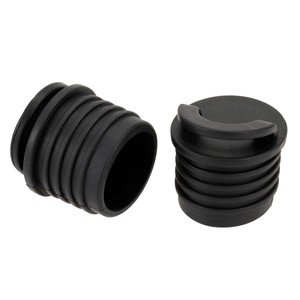






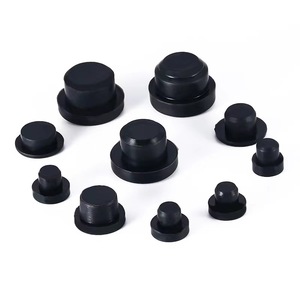
Rubber screw plugs are available in various configurations, each designed for specific applications. Selecting the right type ensures optimal performance, especially considering factors like sealing requirements, fluid compatibility, and pressure conditions. Below is a detailed overview of the most common types of rubber screw plugs.
Rubber hex plugs provide a secure seal in applications requiring a hex key for installation. This makes them suitable for high torque situations. These plugs are often used in hydraulic systems, engines, and high-pressure containers. In these areas a reliable seal to prevent leakage is critical. The hexagonal shape ensures even distribution of force, reducing the risk of stripping the plug under heavy use. This feature enables tight, leak-proof seals that last longer in demanding environments.
The circular neoprene plug is known for its ease of installation and removal. A circular rubber screw plug can be used in low to moderate pressure applications. Thus, it suits areas where quick access is required. These plugs are commonly found in automotive fuel systems, electrical enclosures, and medical devices. These plugs can easily be installed and removed. Additionally, circular screw plugs have a design that facilitates quick adjustments or replacements when needed.
Rubber plugs with square surfaces are designed for applications where a greater sealing area is required. These plugs are ideal for high-torque applications or where materials need to be securely fastened. Common use cases include engines, machinery, and equipment in industrial settings. The square shape evenly distributes pressure, providing a tight, leak-proof seal. This ensures maximum safety and efficiency in heavy-duty operations.
Tapered rubber screw plugs provide a self-locking feature. It makes them ideal for high-pressure sealing requirements. The tapered design allows for easy insertion and creates a tighter seal as pressure increases. Often found in oil and gas pipelines, automotive components, and high-pressure containers. These plugs are a go-to choice for applications requiring both strength and durability.
Rubber screw plugs come in various materials. Each offers unique advantages for sealing in specific applications. Choosing the right material for B2B clients depends on the operational demands, including temperature, chemical exposure, and environmental conditions. Below is a detailed overview of the most commonly used materials.
Neoprene is widely used in rubber screw plugs due to its versatility and resilience. It can withstand extreme temperatures, ranging from -40°C to 120°C. Neoprene also possesses excellent resistance to oils, chemicals, and weathering. This makes it ideal for both automotive and industrial applications. Furthermore, neoprene maintains its elasticity and sealing properties over an extended period. This guarantees long-term leak prevention in diverse environments.
Nitrile rubber, or Acrylonitrile Butadiene Rubber (NBR), is commonly used for screw plugs that require chemical resistance and durability. They resist a wide variety of petroleum-based fluids, making them ideal for applications in the automotive and aerospace industries. Nitrile rubber remains flexible and maintains a tight seal across an extensive temperature range. This property makes these nitrile rubber plugs a reliable choice for both heavy-duty and specialized industrial applications.
Silicone rubber is used in environments that demand extreme temperatures and need flexibility. Silicon rubber plugs can withstand temperatures as high as 250°C and as low as -60°C. It also has exceptional UV and ozone resistance, making it suitable for outdoor applications. This material retains its elasticity over time. It ensures that silicone rubber screw plugs are widely used in the automotive, aerospace, and electronics industries.
EPDM (Ethylene Propylene Diene Monomer) rubber is well-known for its superior resistance to weathering, ozone, and UV rays. It also performs well in a range of temperatures from -40°C to 120°C. These properties make it ideal for outdoor and electrical insulation applications. EPDM screw plugs provide long-lasting sealing capabilities in environments exposed to sunlight, chemicals, and extreme weather conditions. This durability ensures that these plugs are commonly used in both automotive and construction-related applications.
Selecting the right rubber screw plugs involves considering several clients’ requirements. These factors are the application’s sealing requirements, environmental conditions, and compatibility with materials. Below is a detailed guide on various considerations.
Compression set resistance is critical for applications requiring long-term sealing under sustained pressure. A plug with high compression set resistance maintains its shape and sealing capability even after extended use. This feature is especially important in the automotive and industrial sectors. In these areas, plugs are exposed to constant pressure and varying temperatures. Compression set resistance ensures that the seal remains effective over time. This ultimately decreases the need for frequent maintenance or replacement.
Chemical resistance is vital for rubber screw plugs used in environments where they will be exposed to oils, fuels, or aggressive chemicals. For example, nitrile and Viton offer excellent resistance to petroleum-based products and various industrial chemicals. On the other hand, EPDM and neoprene provide adequate protection against a range of environmentally common chemicals. Choosing a chemically resistant screw plug prevents degradation. Chemical resistance also ensures the seal remains effective, even in challenging conditions.
The hardness of rubber screw plugs determines their load-bearing capacity, flexibility, and ability to form an effective seal. Softer plugs (<60 Shore A) provide a flexible seal. This easy allows for minor surface irregularities to be accommodated. Conversely, harder plugs (70-90 Shore A) are suitable for heavy-duty applications requiring greater force tolerance. In these applications, flexibility and load bearing are not as needed. Selecting the appropriate shore hardness ensures the plug performs optimally in its intended application.
Temperature resistance is a crucial factor in selecting rubber screw plugs for clients. Silicone rubber plugs are suited for high-temperature environments. EPDM and neoprene plugs perform well in moderate temperature ranges. Nitrile rubber plugs are ideal for high and low temperatures. The right plug material will ensure it retains its sealing capacity, elasticity, and overall integrity under temperature fluctuations. This retention is vital in the automotive, aerospace, and electronic sectors.
Rubber screw plugs play a critical role in various industrial settings. They ensure leaks are prevented, attain safety, and improve efficiency. Below is a detailed overview of their most common applications.
Rubber screw plugs are essential components in the automotive industry. They are used for sealing engine parts, fluid reservoirs, and gas tanks. EPDM screw plugs provide excellent resistance to heat, chemicals, and weathering. This resistance ensures long-lasting seals in engines, radiators, and electrical systems. Neoprene plugs are used in air conditioning systems and automotive electronics. This is because of their versatility and durability. Using these plugs improves safety by preventing leaks of fluids such as gasoline, oil, and antifreeze. They also enhance the overall efficiency of automotive systems by reducing the need for repair.
Rubber screw plugs are used in container and piping systems to seal openings and prevent leaks in chemical storage tanks and pipelines. Nitrile and Viton rubber plugs provide excellent chemical resistance to petroleum-based products, solvents, and various industrial chemicals. These plugs prevent hazardous materials from leaking and ensure the safe transportation and storage of chemicals. They are commonly used in industries like oil and gas, chemical processing, and wastewater treatment, where safety and efficiency are paramount. Therefore, they can be found in containers and piping systems.
In the medical industry, rubber screw plugs are used to seal equipment, ensuring that devices remain sterile until use. Silicone rubber plugs are ideal for this application. They can withstand extreme temperatures and will not break down with exposure to steam or other sterilization methods. These plugs ensure that vital medical equipment, such as surgical instruments and drug delivery systems, remains contaminant-free. Thus, they contribute to patient safety and the effectiveness of medical treatments.
Rubber screw plugs in the aerospace industry seal fuel tanks, hydraulic systems, and pressure vessels. Silicone and nitrile plugs provide excellent sealing under extreme temperatures and chemical exposure. They are essential for preventing leaks that could compromise safety and system integrity. Furthermore, using rubber screw plugs helps maintain optimal performance in aircraft systems. This is because they can withstand the rigorous demands of flight.
Rubber screw plugs are crucial for sealing electronic devices. They ensure that components remain protected from dust, moisture, and other environmental factors. Silicone and neoprene plugs provide effective seals for varying degrees of moisture and temperature. Using these plugs improves the durability and functionality of electronic devices in industries such as consumer electronics, aerospace, and medical technology. Furthermore, the plugs prevent internal damage to electronic components and reduce malfunction risk.
A1: Yes, rubber screw plugs come in various sizes and are suitable for different applications. Common size ranges include M6 to M30 for metric threads or 1/4 to 1 for imperial sizes. Thus, always measure the threaded hole before selecting a rubber screw plug for a proper fit. This ensures that an effective seal for the application is achieved.
A2: Yes. Rubber screw plugs are designed with high-temperature resistance. These plugs resist up to about 250°C. They are often used to seal electronic enclosures, automotive components, and aerospace parts. They are also great for applications where temperature fluctuation is normal. Thus, continuous exposure to extreme heat will degrade some plugs. However, this degradation is minimal with silicone and Viton plugs.
A3: To increase the lifespan of rubber screw plugs, store them in a cool, dry place. Avoid direct sunlight and ozone exposure, as it can degrade the rubber over time. Store them in a container that does not contain petroleum products. Also, avoid excessive stretching or compression to maintain their original shape and sealing properties.
A4: There is no maintenance required for rubber screw plugs. Nonetheless, it is vital to inspect them regularly for signs of wear or degradation. It is also good to ensure they are properly torqued. This ensures an effective seal, especially in high-pressure or chemical exposure environments. Depending on the application, replace plugs as soon as they become worn to maintain optimal performance.
A5: Yes, a rubber screw plug can seal a leaking screw hole. They are designed to create a watertight seal in threaded holes. The seal prevents liquids from infiltrating electronic devices and machinery and is commonly utilized in automotive, industrial, and marine applications.